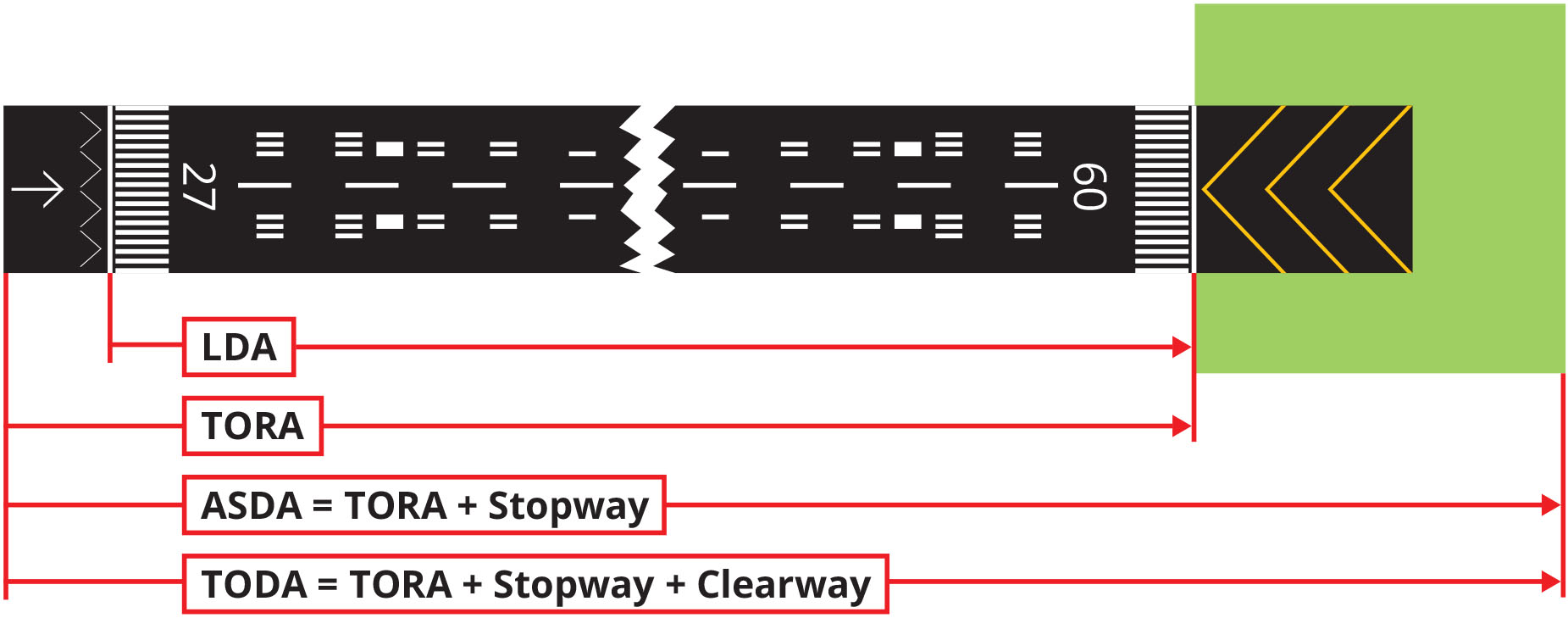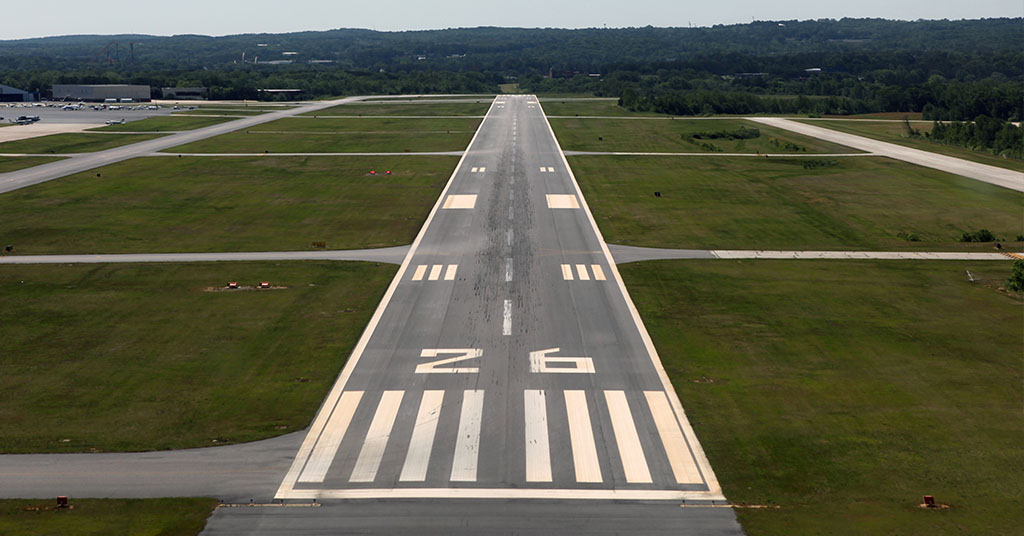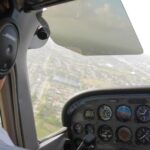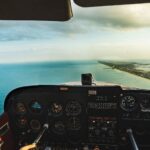In the June 2018 edition of the Pilot’s Digest, we discussed the balanced field concept regarding runway length, but what happens when there is not sufficient room to construct a balanced field? Look at airports like New York La Guardia (KLGA), Dallas Love Field (KDAL), Charleston West Virginia (KCRW), or Reno (KRNO). Each of these airports are serviced by major airlines and none have the balanced field described in the previous article.
To accommodate these cities, runways are built using a declared distance to meet the FAA requirements. The runway length used for performance calculations is not necessarily the same as the physical length of the paved runway surface. The “D” symbol on the airport diagram stands for Declared Distances which are published in the Airport Facility Directory. The four basic distances are:
LDA – Landing Distance Available: Length of runway to be used when calculating landing performance requirements (more on this later in this lesson).
TORA – Takeoff Run Available: Similar to TODA, but only considers the ground run, not the climb to the screen height.
ASDA – Accelerate-Stop Distance Available: The maximum allowable ASD for takeoff on that runway.
TODA -Take-Off Distance Available: The maximum allowable AGD (Accelerate Go Distance) for takeoff on that runway.
In order to understand what an unbalanced field means, it is important you are introduced to the following terms: clearway, stopway, and displaced threshold.
A clearway is described as an area connected to and extending beyond the runway end available for completion of the takeoff operation of turbine-powered airplanes. A clearway increases the allowable airplane operating takeoff weight without increasing runway length. The area over which the clearway lies need not be suitable for stopping aircraft in the event of an aborted takeoff. The practical limits for a clearway are, 1000 ft in length and at least 500 ft in width, centered on the runway centerline. No object or terrain may protrude through the clearway plane except for threshold lights no higher than 26 inches and located off the runway sides.
A stopway is an area beyond the takeoff runway that is centered on the extended runway centerline and designated by the airport authority for use in decelerating an airplane during an aborted takeoff. It must be at least as wide as the runway and able to support an airplane during an aborted takeoff without causing structural damage to the airplane.
And last, a displaced threshold, or DTHR, is described as a runway threshold located at a point other than the physical beginning or end of the runway. The portion of the runway so displaced may be used for takeoff but not for landing.
If all this seems confusing, remember an airport analysis for your airplane takes into account all these parameters. All Part 121 operators are required to use an airport analysis. For those Part 135 or Part 91 operators, you may have to educate your pilots on how to compute and use these tools to comply with the FARs (or request your company/owner to purchase an airport analysis for your operation).
Blue Skies and Soft Landings,
Captain Richard Hyslop











